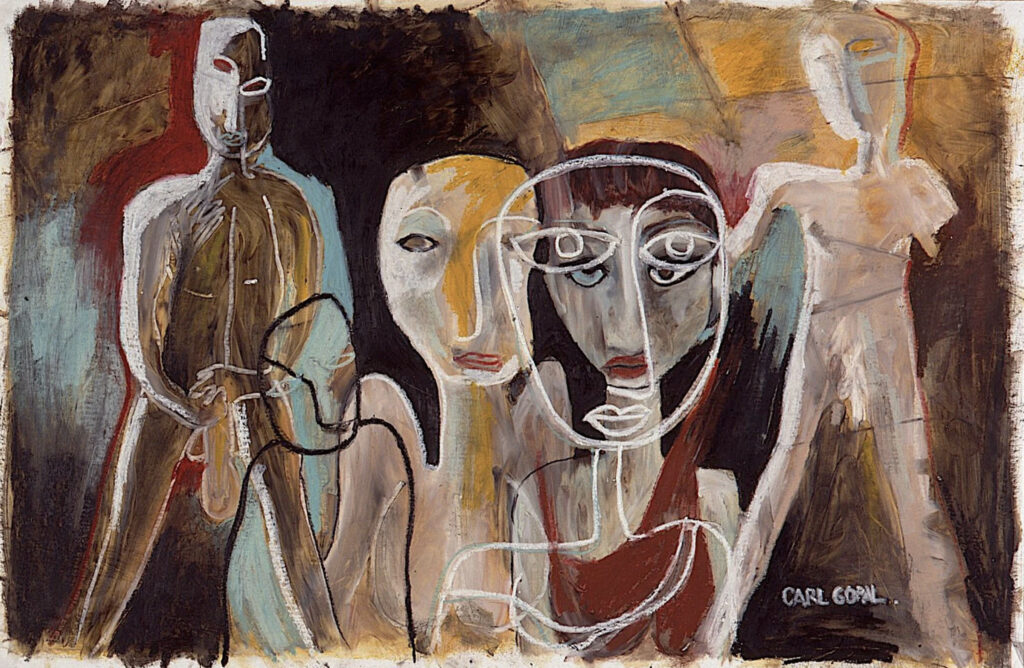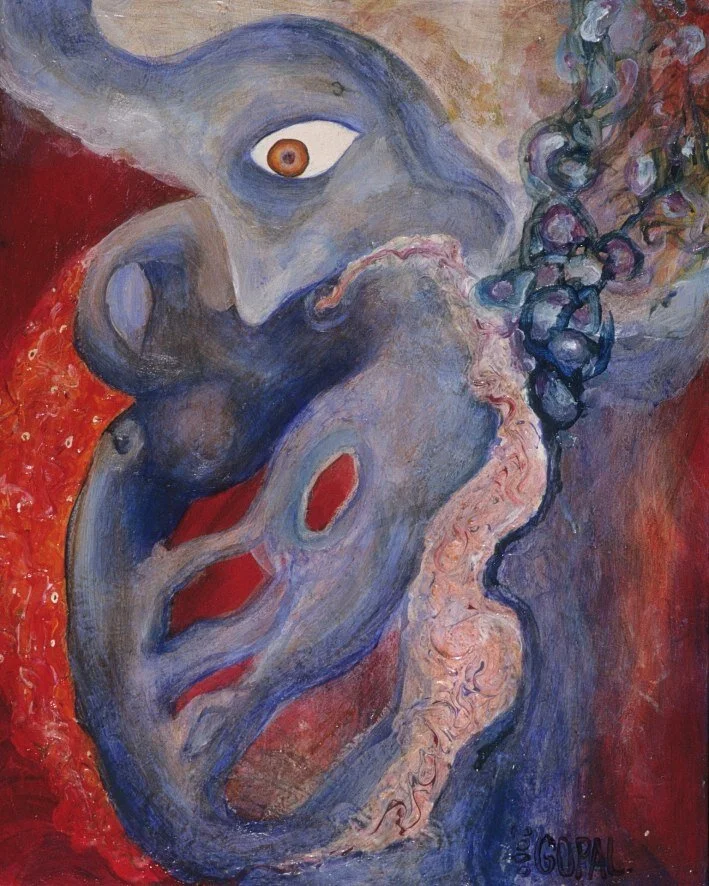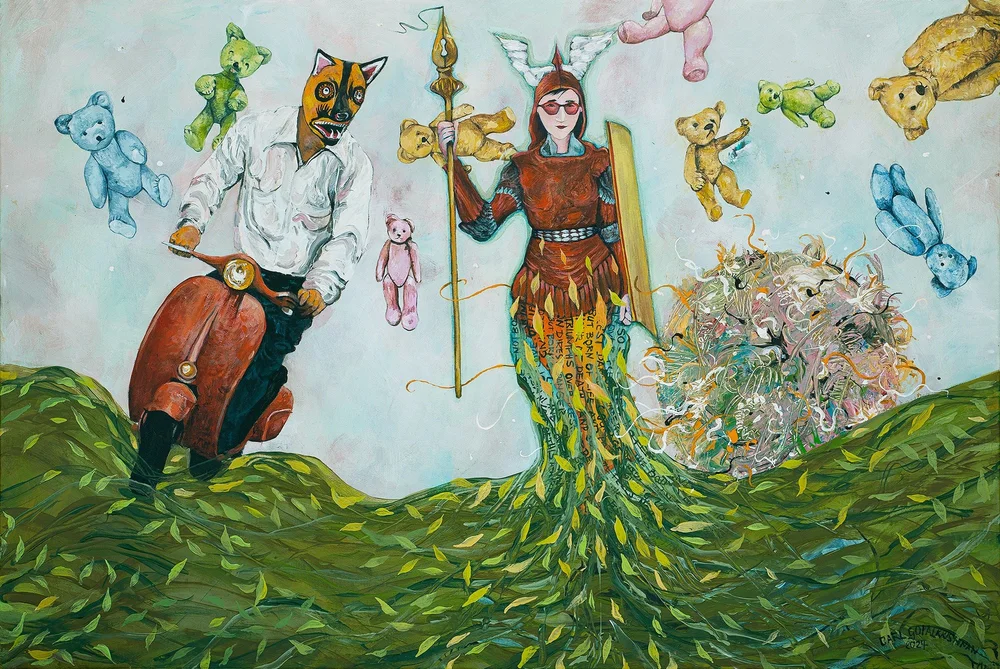 Carl Gopalkrishnan describes his practice as “drawing on religion, science, mythology, literature, politics, and music.”
Carl Gopalkrishnan describes his practice as “drawing on religion, science, mythology, literature, politics, and music.”
Born in the United Kingdom to Chinese and Indian parents and now living in Perth, Australia, he has worked for decades as a painter, printmaker, writer, and consultant in multicultural and LGBTIQ+ inclusion policy. His mixed heritage and queer identity are not side notes; they are the medium through which his art looks at faith.
A language of crossings
In his studio notes, Gopalkrishnan often returns to the idea of crossing… between cultures, between genders, between sacred and profane imagery. His work Gaza Trilogy (2024–) begins from scenes of war and displacement, combining “religious ancient prophecy, symbols from ancient amulets and cultural artifacts such as the golliwog doll.” The canvases weave fragments of iconography and trauma. They ask how inherited symbols of holiness might speak again after violence.
Earlier series such as White Crow and Like a Drone transform biblical and mythological forms through contemporary media. The crow, once a messenger between life and death, becomes an image of resilience and defiance. The drone, both instrument of surveillance and eye in the sky, turns into an inverted angelic gaze. Gopalkrishnan does not moralize these figures; he lets them reveal the complexity of seeing.
Layers of identity
His essay Auditioning for God: Drag as Religious Art (Earth & Altar Magazine, 2025) describes a performance in which he appears in drag before a camera:
“I wanted to physically inhabit several characters … to say: ‘This is who I am. God, you have loved and produced me. I love and produce myself for you now.’”
Here, drag becomes prayer — not parody of faith but participation in creation. Gopalkrishnan writes that his question was simple: “What is ‘religious art’ anyway and why can’t I see myself in it?” The act of dressing and posing becomes a theology of embodiment. The performer, made visible, completes the image that religious art had left unfinished.
For many LGBTIQ believers, the absence of their own likeness in sacred representation is a quiet wound. Gopalkrishnan’s work replies without words: presence itself can be devotion. To appear, to be seen, to create one’s image before God is to enact the same gesture that faith names as incarnation.
On his official site he writes, “Those layers of identity and experience have become inseparable from my art.” Each layer—Chinese, Indian, British, queer, Catholic-educated—adds texture to the surface of his work. The visual and the theological coincide: light passes through many pigments before reaching the eye.
His life between continents and cultures reflects a larger conversation about belonging. He has written for policy forums on social cohesion and diversity, linking artistic imagination with civic responsibility. The same impulse guides both: a belief that dialogue begins when people risk showing their full complexity.
A conversation with faith
For the Global Network of Rainbow Catholics, Gopalkrishnan’s work offers a mirror of our mission: to nurture dialogue between Church and LGBTIQ persons through the shared language of faith. His art does not demand agreement; it invites attention. The Church, seen through his lens, is not a fortress but an unfinished canvas. Each figure added, each colour made visible, expands what holiness can look like.
His Auditioning for God series aligns with the Gospel moment when Jesus asks, “Who do you say I am?” (Mk 8:29). The question reverses direction in his work: “Who do I say that I am — before God, before community, before art?” The answer comes not as theory but as image, movement, and gesture.
In the end, Gopalkrishnan’s paintings and performances do not seek to resolve conflict between identity and belief. They hold both in the same frame. The sacred, he suggests, is not purity but relation… the meeting of unlike elements that generate new vision, doctrine’s renewal.Through the quiet persistence of his work, Carl Gopalkrishnan joins those who keep faith open: artists who, by painting and performing themselves into the story, make space for others to see and be seen.


